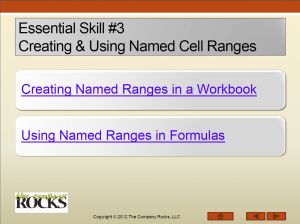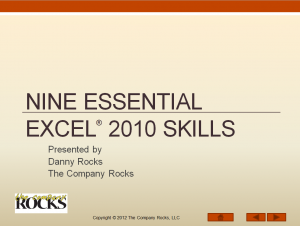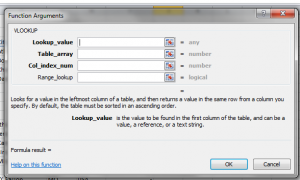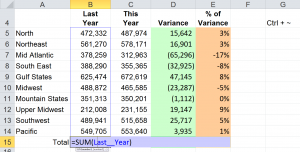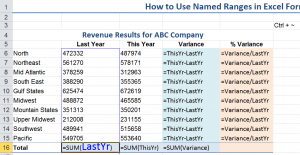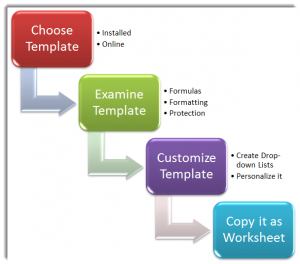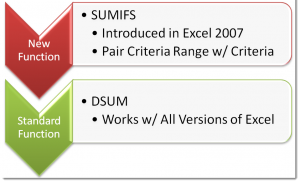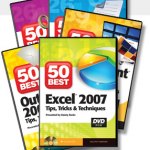I believe that there are two main reasons to create and use Named Cell Ranges in Excel”
- They make great Navigational Bookmarks – to quickly move to a specific location in your workbook
- Using Named Cell Ranges in Excel Formulas make the formula:
- Easier to Write
- Easier to Explain – to others
- Easier to Understand – when you need to edit it or copy it.
9 Essential Excel Skills
My latest Excel Video Training Resource: “9 Essential Excel Skills,” contains 4 hours of focused video training. There are a total of 25 individual video tutorials in the resource.
Here, in this lesson, I demonstrate several of the tips and techniques that I present in Essential Skill # 3. I show you how easy it is to create and use Named Cell Ranges in Excel Formulas and Functions.
Secure Online Shopping at The Company Rocks
I invite you to visit my secure, online shopping website – http://shop.thecompanyrocks.com – to explore all of the training resources that I offer you.
Watch My Tutorial in High Definition
Follow this link to watch my Excel tutorial in High Definition on my YouTube Channel – DannyRocksExcels
 How to Create and Use Nammed Cell Ranges in Excel [ 8:13 ] Play Now | Play in Popup | Download (4615)
How to Create and Use Nammed Cell Ranges in Excel [ 8:13 ] Play Now | Play in Popup | Download (4615)